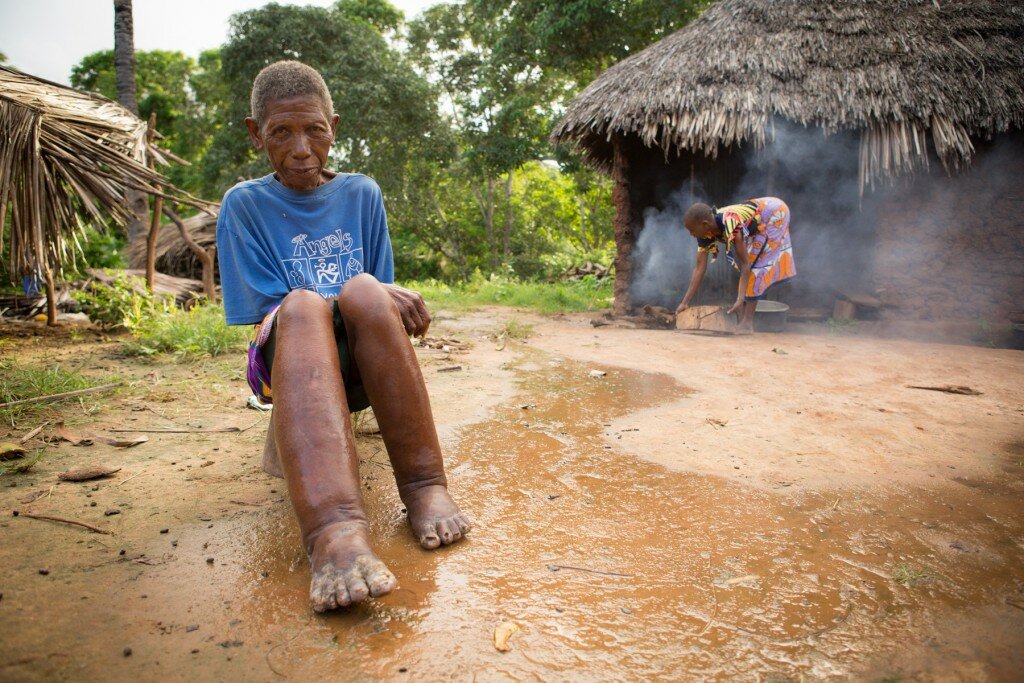When we talk about the effects of neglected tropical diseases (NTDs), we have a tendency to focus on the physical and economic impacts alone, ignoring a major side effect of these conditions. In recognition of World Mental Health Day on October 10, we are taking a look at the unseen consequences of one of the most devastating NTDs.
Lymphatic filariasis (LF) is a disease transmitted by mosquitoes that leads to painful, debilitating swelling of the limbs or genitalia, inspiring the disease’s other name, elephantiasis. Though LF is easily prevented with medication, if left untreated, the severe swelling is irreversible. Individuals suffering from advanced LF are often unable to work and can suffer social stigma as a result of the disfiguring disease. Many are ostracized or even shunned by their communities.
The connection between LF and mental health has not received much attention in the scientific literature. A new paper released this summer by David H. Molyneux, Charles Mackenzie and Thanh G.N. Ton is the first to estimate the global psychological burden caused by the disease. Based on the few studies that exist on the topic, they estimate that 50 percent of clinical LF patients suffer from depression – roughly 18.1 million people. This is a conservative estimate, given that a study in India, which bears the largest burden of LF in the world, found that 97 percent of LF patients suffer from depressive illness.
When calculating the true burden of LF, Molyneux and his colleagues argue that the psychological effects on caregivers, which have not previously been quantified, need to be factored in as well. Based on a study of caregivers of blind individuals, which found that 48 percent had depression, they estimate 25 percent of caregivers of individuals with severe LF to be depressed, for an estimated total of 1.25 million people. That brings the total number of individuals suffering from depression as a result of LF to 19.35 million.
In 2013, the Global Network’s Emily Conron traveled to Lèogâne, Haiti, to interview patients with advanced LF. “These individuals told me over and over again that the hardest part of their condition was their isolation from family and friends and the shame they felt when they went out in public, where strangers would stare at their affected limb and make cruel comments,” Emily writes. In a country with one psychiatrist for every 200,000 people, access to traditional mental health care in Haiti is a near impossibility.
The feelings of social isolation have medical implications as well as psychological. A 2007 study conducted in Sri Lanka found that those suffering with severe LF avoided clinical treatment due to the embarrassment of being seen in public with the condition.
When it comes to tackling NTDs, treatment must address psychological challenges as well as physical symptoms. Though the World Health Organization began testing support programs for LF patients in 1998, such programs are still not widespread. Morbidity management – a basic package of services aimed at preventing disability in individuals already infected with advanced LF, ideally including measures to prevent disability from the mental health implications of LF – has not been scaled up to meet the needs of patients. Despite the fact that WHO’s Global Programme to Eliminate Lymphatic Filariasis, launched in 2000, includes LF morbidity management as a twin strategic goal of preventive chemotherapy to prevent new LF cases, only about one-third of national LF programs have established morbidity management measures.
Patients with advanced LF are, sadly, some of the most neglected patients of all those affected by neglected tropical diseases. Much more should be done to ensure that patients for whom the goal of eliminating LF transmission will be realized too late receive the healthcare they need for the physical and psychosocial effects of LF.


One thought on “The Unseen Impacts of NTDs”